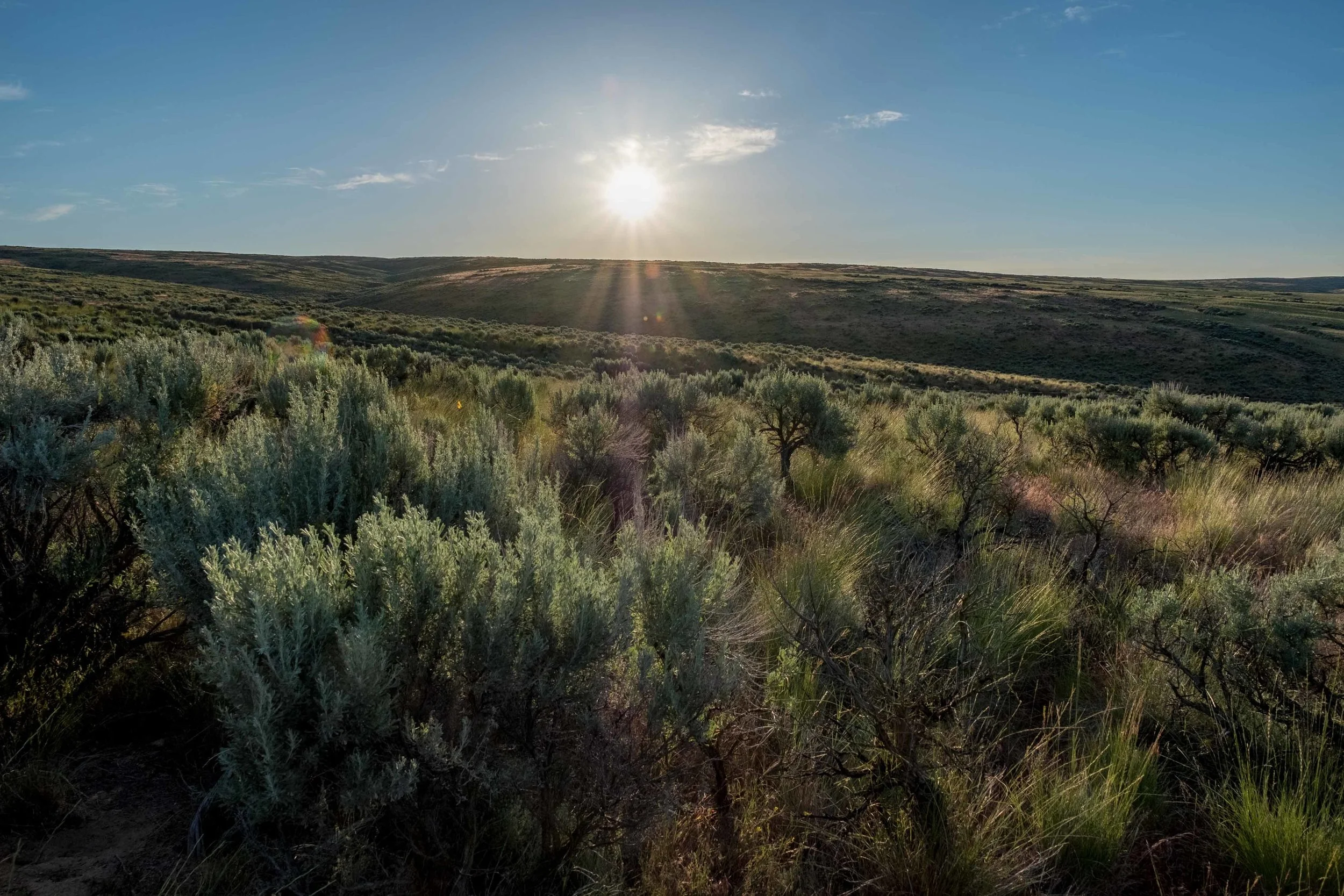This summer, two University of Washington students joined The Nature Conservancy’s (TNC’s) Science Team as conservation science interns. Alex Crabtree and Katie Thomas spent nine weeks with TNC WA through UW’s EarthLab Summer Internship Program.
Conservation Adventures in the Shrub-Steppe
Kids & Nature: How Lingcod Pots Work
Written by Makayla Johnson, Volunteer Intern
Most commercial lingcod fishermen use trawl nets to capture lingcod along the Washington coast. The main problem with this fishing method is that trawl nets are notorious for capturing unintended species of fish while scraping the sea floor at the same time.
The unintended capture of species through fishing is called bycatch. Bycatch has impacts to the environment and to economics. Unfortunately, most of the bycatch end up dying before they can be put back in the ocean. Also, if lingcod fishermen catch too many recovering overfished species as bycatch, their fishery can be shut down by the government.
The Nature Conservancy has teamed up with The University of Washington and lingcod fishermen in Ilwaco to invent a new fishing pot that protects habitat and sea creatures. They did this by observing the behavior of the Lingcod and designing a fishing pot that catches lingcod, with minimal if not any- bycatch. The fishing pot also has minimal impacts to the seafloor.
Every year, the Seattle Aquarium hosts a "Discover Science" weekend where federal, state and other non-governmental environmental organizations come up with fun outreach activities to educate the public on all of the cool science that they are doing. Each organization creates outreach materials to engage people of all ages from 2-100! The public is invited to walk through the aquarium and talk with the different organizations about their science research.
As an intern at The Nature Conservancy, I had the opportunity to work with the marine team and TNC volunteers at the Aquarium to present TNC’s lingcod pot project! We worked hard to get ready for the day. We created poster boards with information about the project, retrieved video footage of the pots in action from fishermen, and developed an outreach activity for the children. Working at the booth was fantastic! At the event, it was awesome to interact with the smaller children with the game we made to demonstrate how the lingcod pots work, and talk with their parents about how TNC and the University of Washington is helping to advance the technology of the fishermen for a cleaner catch. We saw a total of 5,218 visitors through our doors over the two days, 3,185 of them the first day and 2,033 the second day.
When Conservation Pays - Dabob Bay Clean up
Seeing the benefits of volunteering clean up at Dabob Bay
Written & Photographed by Cailin Mackenzie, GLOBE Intern
What four-generation family owned business could possibly survive market upheavals, fluctuating production, and a world war? The Rock Point Oyster Co. has been cultivating oysters in Washington since 1922. In 1943, founder E.N. Steele purchased 200 acres in one of Puget Sound’s largest and healthiest salt marsh estuaries – Dabob Bay.
The Nature Conservancy has partnered with the Rock Point Oyster Co. for three decades to conserve Dabob Bay’s irreplaceable habitat on which orcas, salmon, forage fish, shellfish, and shorebirds depend. Steele’s grandson David (pictured in photos 6 & 7) has vastly increased production in recent years with water quality monitoring and other environmental investments that safeguard Rock Point’s sustainability. Last week, a group of intrepid volunteers headed to Long Spit, one of our protected areas, and monitored conditions, collected trash, removed invasive plants, and learned about Steele’s strategies to make oyster production and Dabob restoration symbiotic.
For shellfish farmers, the ramifications of climate change are felt where it really hurts – the bank. David Steele taught us how young oysters (which look like quinoa!) cannot tolerate low pH and are dying off with increasing marine acidification. Algal blooms, one of the worst consequences of acidification, can be significantly reduced by healthy shellfish populations. Despite their sand-grain size, oyster larvae can consume an incredible amount of algae. Learning about Steele’s operation grounded our volunteer event with an appreciation of Dabob Bay’s ability to nurture abundant life, both human and wild.
After the oyster lesson, our group took a barge to Long Spit, a gorgeous peninsula of beach created by Dabob Bay’s unique hydrologic cycles. The spit has suffered from Scotch Broom invasion for years, so we focused on weeding out broom and other invasives. We also hauled out ten garbage bags filled with everything from plastic bottles to an abandoned tire.
We are dedicated to maintaining innovative collaboration with partners like the Steele family to continue informed stewardship, and could not make our positive impact without our committed volunteers!

































